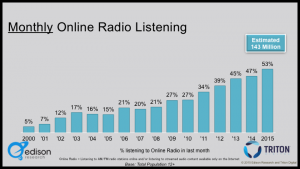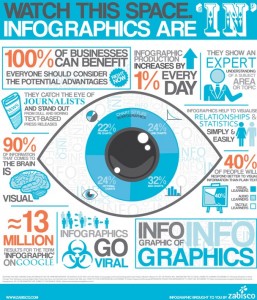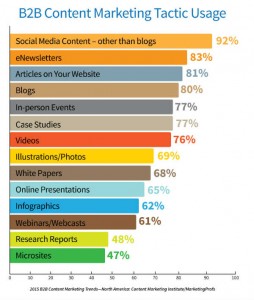Nearly all B2B marketers rely on content marketing as an effective technique to promote their brands. However, 60% of them are still facing serious challenges to produce engaging content on a consistent basis. The question is: are they misunderstanding the term content?
Content marketing involves much more than writing and promoting blog posts. Written content is great, especially when it’s well-composed. However, it’s not (always) the most effective tool to drive engagement.
Internet users can be quite lazy.
They may not grab a dictionary to get through a complex blog post, so simplicity wins. They may not waste a minute of their time if they see your post is too long, so brief and informative is key. Even if you write the perfect post, it still might not deliver the results you expect.
You don’t need to rely on complex strategies to help you develop better content though. It could be that the only thing you need is a shift in the form of content you’re delivering.
So instead of focusing on writing articles enriched with relevant images, move a little outside the box and try something different. Here are some of the best content marketing strategies that don’t involve writing:
1. Publish Online Videos
Remember when the “Ryan Gosling won’t eat his cereal” videos went viral? The creator of these videos, Ryan McHenry, used Vine to create this silly, but effective pop-culture gem. This is an example that all content marketers can learn from: humor in video format gets tons of attention from influencers and attracts a large audience.

According to Twitter’s stats, photos and videos get the most retweets among all types of content. Thus, it would be wiser for content marketers to focus more on visual candy than on textual blog posts.
The best thing about videos is their versatility. You can turn a filmed video into a podcast as well as a piece of text by having it transcribed. Thus, you’ll meet all the preferences of your audience.
Some will like the video, others will opt for the podcast, and the rest will prefer the old-fashioned blog post. You’ll offer a single post in all these different forms, and that’s what smart content marketing is all about.
Kissmetrics is a great example of a website that implements this strategy. The YouTube channel is very active, but the same content is also available at the website.
If there is any way for you to bring the topic to your audience in video format, you should definitely do so. You’ll need good equipment if you want to produce high-quality videos, or you can also rent a studio for that purpose. These are some of the editors you can try:
BGB’s Note: You can also glean some tips on video production here and here.
2. Promote Podcasts
You would think that the age of Internet killed the radio, but podcasts prove you wrong. People still want to listen to audio materials. According to a report from Edison Research and Triton Digital, the number of Americans who listen to podcasts during one month grew from 39 million in 2014 to 46 million in 2015.
Sports, politics and news are the most popular categories for podcasting, but the listeners don’t mind some comedy along the way. If you can fit your content into any of these categories, then you should certainly try podcasting instead of writing.

There are two formats you can consider for a podcast: it can be an interview with an influential person from your niche, or you can be the only one who speaks. You’ll need an outline for any of these alternatives, so make sure to plan your approach very carefully before you start recording.
Here are some tools you can use to record podcasts:
- Hangouts on Air for live streaming;
- Audacity for free audio recording and editing;
- Skype for recording interviews, which you’ll then turn into podcasts with an audio editor.
BGB’s Note: You can also glean some tips on podcasting production on a budget here and here.
3. Create Infographics
We keep talking about visual content because it works. Infographics attract the attention of the readers through great design that presents easy-to-digest information. This type of content works for all industries, so the least you can do is to implement it in your marketing strategy.
Graphics attract the attention of a viewer with a success that text could never achieve. They improve the cognitive functions of comprehension, recollection, and retention of information. Plus, a well-designed infographic has the power to affect people’s emotions and attitudes. A graphic will engage the viewer’s imagination and stimulate the creative thinking process.
The human brain processes visuals 60,000 times faster than it deals with text. The statistics show that an infographic is 30 times more likely to be read than a text article. That’s a good reason to start developing awesome infographics, isn’t it?

So, how exactly do you develop a great infographic?
First, you conduct a research or a present a survey that will provide you with enough factual data to build your premise. Then, you showcase that data through an appealing infographic. You can use some of the following tools to do that:
All these tools include templates that are pretty easy to use, but you should still hire a graphic designer if you want to get a breathtaking infographic that will get lots of attention in the online world.
4. Harness the Power of Webinars
Did you know that 61% of content marketers include webinars in their practices? Although this is not the most common technique for content marketing, it still makes sense because it can easily turn you into a credible authority within your field.
Often an audience is very engaged with a live presentation. They are encouraged to take notes and pay attention to everything they are listening to. That’s not an effect you can achieve through videos, infographics and podcasts, since the viewer/listener always has the impression that he can return to the content later.
A webinar is different; it’s happening here and now!
The average attendance rate for webinars is 40 – 50% of the registrants, so you can expect many people to show up if you manage to get their attention before the event starts. Of course, recorded versions of webinars also work, but it’s wiser to attract your audience for the live presentation if you can.

Needless to say, you have to find an engaging presenter for a webinar to be successful. Although many attendants may be attracted through a marketing campaign, they will not enjoy webinars with poor presenters.
Here are some tools you can use for creating webinars:
BGB’s Note: You can glean some helpful tips for engaging webinars here and here.
Step Away from Plain Text. Leave Room for Awesome Content!
The term content is usually related to text, but it’s definitely not limited to it. You can’t narrow your marketing campaign to just plain articles, blog posts and website content. There are plenty of other options for achieving greater engagement!
The good news is that the 4 above-listed methods don’t require advanced technical knowledge and skills. Any content marketer can deal with them quite successfully, so it’s about time for you to try them too!
Over to You
Got any content marketing strategies you use successfully that don’t involve writing and ‘using your words’? I bet if you think about it hard enough, you can come up with some pretty creative stuff. Feel free to share your ideas in the comments below.
Figure 1. Image source Figure 2. Image source Figure 3. Image source Figure 4. Image source Figure 5. Image source
